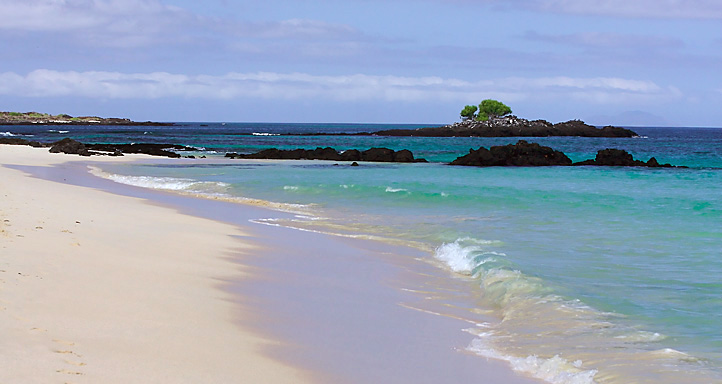
View at Bachas Beach on Santa Cruz Island. Photo by Aaron Logan licensed Creative Commons Attribution.
Most travelers don’t come to the Galápagos to lie on beaches but rather to watch animals lying on beaches. However, many of the visitor sites are located around beautiful sandy stretches, and you may welcome the chance to sun yourself like a lazy iguana after a hard day of watching wildlife.The longest beach in the archipelago is a 45-minute walk from Puerto Ayora on Santa Cruz. The first beach has strong currents and is popular with surfers, but walk to the end and soak in a sheltered shallow lagoon at Playa Mansa, where marine turtles lay eggs at night.
This beach is named for the remains of wrecked U.S. military barges from World War II, and the rusty metal parts remain visible, jutting out of the white sand. The beach is otherwise pristine and covered in sally lightfoot crabs, while the lagoons behind are home to flamingos.
San Cristóbal has many beautiful beaches — Playa del Amor, La Lobería, and Cerro Brujo — but this beach is one of the quietest. Used as a cool-off after a trip to the highlands, the small beach is backed by mangroves and is also good for surfing.
The main port on Isabela is the most laid-back town in the archipelago, with a peaceful position on a long white-sand beach that is home to a small colony of marine iguanas. Far quieter than other resorts, you may find it difficult to leave.
This brown-sand beach is hardly the most photogenic in the islands, but the history behind it is interesting. The post office barrel has been running since 1793, so leave a postcard and pick up any mail for your local area. A visit is usually combined with the green-tinged beach of nearby Punta Cormorant, colored by olivine minerals.